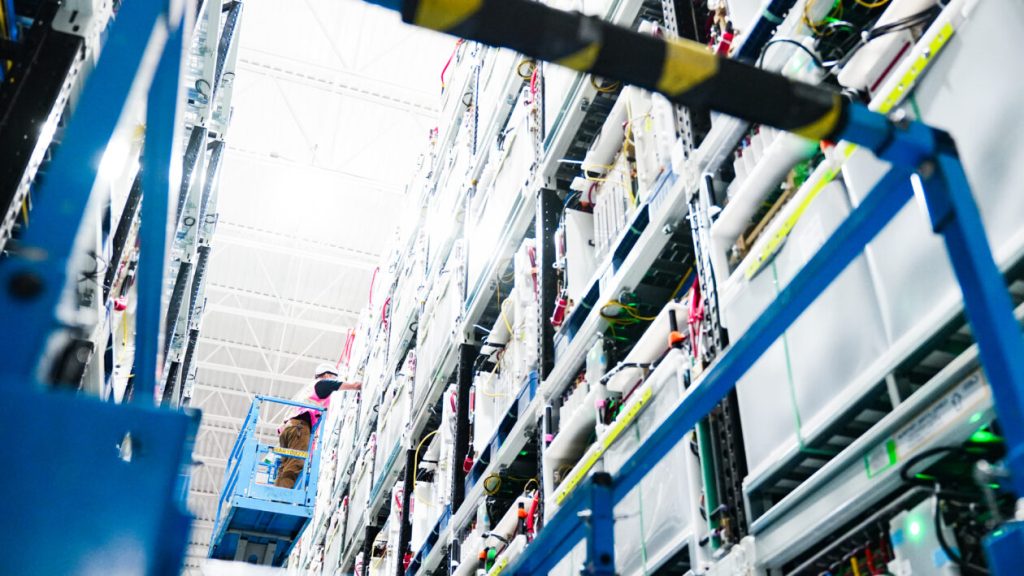The Future of Unlimited Power: Inside Helion Energy’s Bold Fusion Vision
In the industrial landscape of Everett, Washington, lies an unremarkable-looking building named Ursa. What makes this structure extraordinary isn’t visible from outside – it’s what’s contained within its walls: a concrete vault up to 5 feet thick with additional radiation-absorbing plastic, housing a machine called Polaris that could revolutionize how humanity powers itself. This is the headquarters of Helion Energy, a company attempting to harness the same physics that powers stars to create limitless clean energy on Earth. During a rare tour offered to a small group of journalists, CEO David Kirtley explained the remarkable science happening inside: “We run these systems right now at 100 million degrees, about 10 times the temperature of the sun, and compress them to high pressure… the same pressure as the bottom of the Marianas Trench.” The tour provided an unprecedented glimpse into what might be the future of energy production.
Inside Ursa, the Polaris generator and its protective vault occupy only a small portion of the facility. The majority of the space houses 2,500 power units arranged on pallets stacked seven high, containing capacitors charged from the grid to deliver massive 100-gigawatt pulses of electricity. This tremendous energy travels through an astonishing network of specialized coaxial cables – enough to stretch across Washington state and back, approximately 720 miles in total. These thick black bundles snake from the pallets into the vault, coiling on the floor before connecting to the tubular-shaped, 60-foot-long Polaris generator. The system is designed to force lightweight ions to fuse under extreme conditions, creating super-heated plasma that expands against a surrounding magnetic field. The energy from this expansion is directly captured and returned to the capacitors to repeat the process continuously, with excess power intended to feed into the electrical grid – at least, that’s the plan for the future.
Helion stands among numerous competitors in the global race to commercialize fusion power, with demand for electricity escalating rapidly due to data centers and AI advancement. Their approach involves smashing deuterium and helium-3 isotopes together under extreme temperature and pressure conditions. What sets Helion apart is their extraordinarily ambitious timeline – they aim to begin producing energy at their new Malaga, Washington facility by 2028, potentially becoming the world’s first commercial fusion power producer. “There is a level of risk, of being aggressive with program development, new technology and timelines,” Kirtley acknowledges, “But I think it’s worth it. Fusion is the same process that happens in the stars. It has the promise of very low cost electricity that’s clean and safe and base load and always on. And so it’s worth being aggressive.” This timeline has drawn both excitement and skepticism from industry observers.
Critics question whether Helion’s aggressive schedule is realistic for a technology that has eluded commercialization for decades. Ben Levitt, head of R&D for competitor Zap Energy, expressed doubt at a June event: “I don’t see a commercial application in the next few years happening. There is a lot of complicated science and engineering still to be discovered and to be applied.” However, investors have shown tremendous confidence in Helion’s approach, with the company raising over $1 billion from backers including SoftBank, Lightspeed Venture Partners, and OpenAI CEO Sam Altman, who serves as Helion’s board chair. An additional $1.8 billion awaits if Polaris meets its development milestones. According to Kirtley, the current prototype has been operational since December, running all day, five days a week, and successfully creating fusion reactions.
Helion maintains significant secrecy around detailed progress metrics, citing concerns about intellectual property theft by Chinese competitors. This cautious approach has drawn criticism from those who believe greater transparency would allow the scientific community to better evaluate their claims. What is known is that Helion’s strategy differs fundamentally from conventional fusion approaches. While most competitors aim for “ignition” – where fusion reactions produce more power than required to initiate them – Helion pursues a different path focused on system efficiency rather than maximum fusion output. The strategy resembles regenerative braking in electric vehicles: the capacitors provide initial power, and the fusion reaction resupplies that energy plus a small surplus. “We can recover electricity at high efficiency,” Kirtley explained. “Compared to other commercial fusion approaches, we require a lot less fusion. Fusion is the hard part. My goal, ironically, is to do the minimum amount of fusion that we can deliver a product to the customer and generate electricity.”
At the new Malaga site where construction began this summer, Microsoft has already agreed to purchase the energy produced – a vote of confidence from a tech giant with massive power needs. If Helion succeeds in its mission to create commercial fusion power by 2028, it would mark one of the most significant technological breakthroughs of our time, potentially solving energy challenges while drastically reducing carbon emissions. The facility’s celestial naming convention – Ursa, Polaris, and the upcoming commercial Orion plant – reflects the stellar ambitions of this undertaking. Inside that unassuming building in Everett, with its massive power units, miles of specialized cables, and the glowing super-hot plasma contained within Polaris, we might be witnessing the birth of a true energy revolution. The question remains whether Helion’s bold timeline represents visionary confidence or overpromising in a field known for its technical challenges. Either way, their approach has accelerated the timeline for what many consider humanity’s ultimate energy solution.















